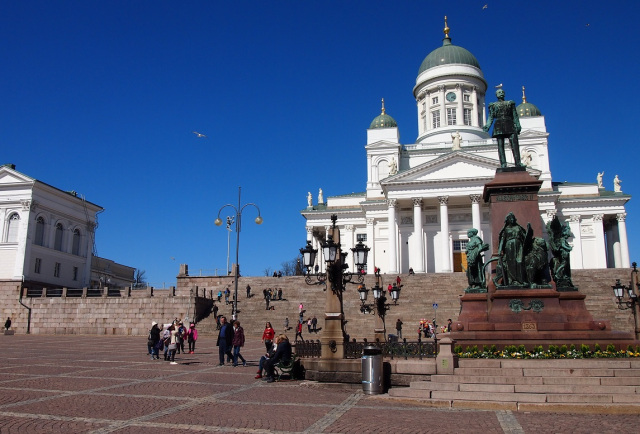
From the blog “Does It Radiate?” by Juhana Harju:
Rajua tukiasemasäteilyä Helsingin keskustassa
(Translated from Finnish with the help of the author.)
All images belong to the author.
In the scientific literature, radio frequency radiation from wireless technology is considered as a form of environmental pollution ( Hardell 2019 ).
In 2011, IARC, a cancer research institute under the auspices of the World Health Organization, classified radio frequency radiation as potentially carcinogenic (Group 2B). The classification covers, inter alia, radiation from smartphones, Wi-Fi and cellular base stations.
Last year, a peer-reviewed scientific paper published a review article, in which (according to the authors), IARC should re – classify radio frequency radiation as carcinogenic (Group 1) due to new scientific evidence. Miller 2018
The WHO’s 2011 classification of carcinogenicity alone should have led to the implementation of the precautionary principle worldwide, i.e. the reduction of exposure to radio frequency radiation. However, the opposite has happened.
In Finland, the Finnish Parliament amended the Radiation Act last year so that, under certain conditions, the maximum permissible power density of radio frequency radiation increased to 20 times the previous one. The change was made to ease the implementation of 5G. I find the increase in the threshold approved by Parliament unreasonable and irresponsible.
Since the WHO’s classification of carcinogenicity, radio frequency radiation has also risen sharply in Helsinki, although it should have been otherwise.
In this post I illustrate what kind of radiation readings I have measured in the Helsinki city center locations. I used a Cornet ED78S with a measurement range of 100 MHz to 8 GHz.
1. Esplanade Park
At the Theater end of the Esplanade Park, the average radio frequency radiation is about 100,000 µW /m², with a maximum of 195,000 µW / m². Esplanade Park has benches so you can sit for long periods. Unintentionally, this area is exposed to strong radio frequency radiation.

2. Senate Square
The Senate Square has an average radio frequency radiation of 45,000 µW /m², with a maximum of 131,000 µW / m². The Senate Square is not only a passage point, but you can spend long hours in the marketplace, for example, sitting down the stairs, or when there is a market day or a party.
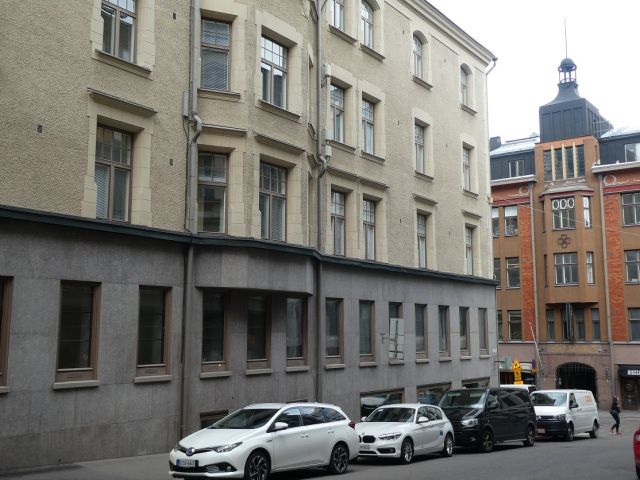
3. Rikhardinkatu
At Rikhardinkatu 2, the average amount of radio frequency radiation is about 200,000 µW / m², with a maximum of 578,000 µW /m². The strong radiation is due to several base station antennas mounted on the wall of the opposite house. Moderately high radio frequency radiation is also present on the Rikhardinkatu side of the adjacent Picnic Café.
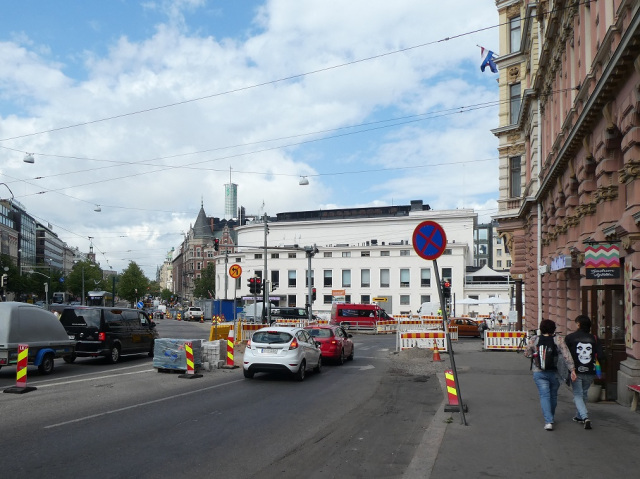
4. Erottaja
At 17 Erottajankatu 17, the average amount of radio frequency radiation is 60,000 µW / m².
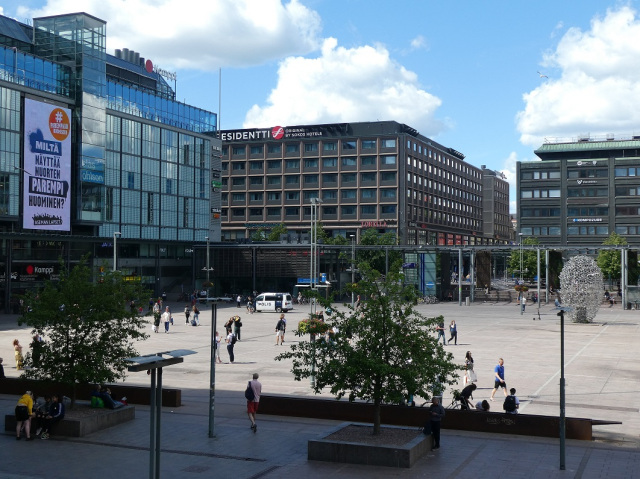
5. Narinkkatori Square in Kamppi
In the middle stages of the Narinkkatori Square, the average radio frequency radiation is approximately 70,000 µW / m² and a maximum of 132,000 µW / m². Narinkkatori employs fundraisers looking for monthly donors to NGOs. They are constantly at work in the marketplace, thus being exposed to strong base station radiation day after day.
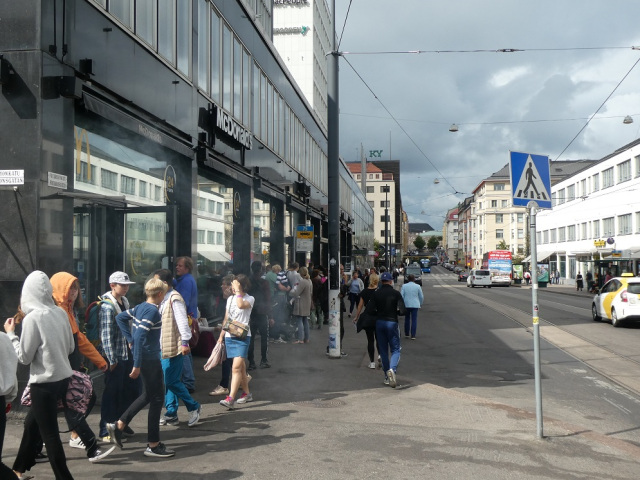
6. Autotalo building
Next to this building at the bus stop at Fredrikinkatu 46, the average amount of radio frequency radiation is 65,000 µW /m². The wait at the bus stop can be up to twenty minutes, so for that period a commuter is exposed to intense radiation.

7. Töölönlahti Event Park
Behind the Finlandia Hall, the Töölönlahti Event Park has an average of approximately 80,000 µW / m² of radio frequency radiation. The highest readings are next to the Armor sculpture in the picture, but there is also plenty of radiation in the nearby children’s climbing area.

8. Oikokatu Street, Kruununhaka district
At the junction of Oikokatu 4 and 6, there is an average of 50,000 µW / m² of base station radiation at street level. The strong radiation is due to the base stations mounted on the chambers of the opposite house. Despite their small size, they are powerful. It can be estimated that Oikokatu 4 and 6 are exposed to strong base station radiation, especially in the third and fourth floor apartments. If I happen to live in those apartments, I would move away immediately.
There is also strong base station radiation in Kruununhaka on Kulmakatu.
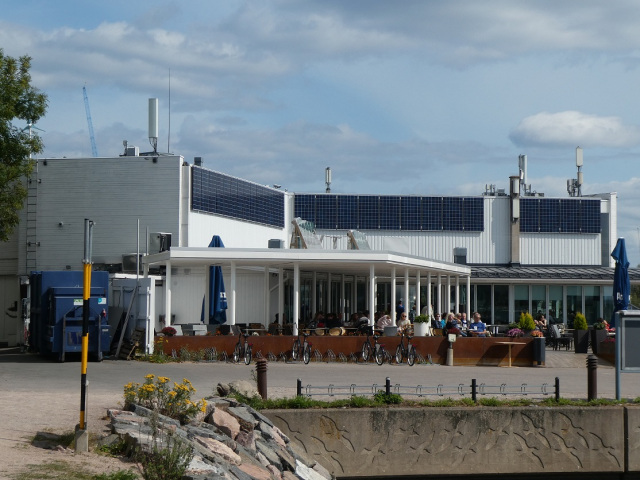
9. Café Carusel and its surroundings
This is a popular site on the Seafront. It has an unusual base station on its roof, which causes the café terrace to emit 50,000-80,000 µW / m² of radio frequency radiation. In the immediate surroundings of the terrace, radio frequency radiation is in some places over 100,000 µW / m².
It is unfortunate that there is strong radiation in a place where people will spend their free time.
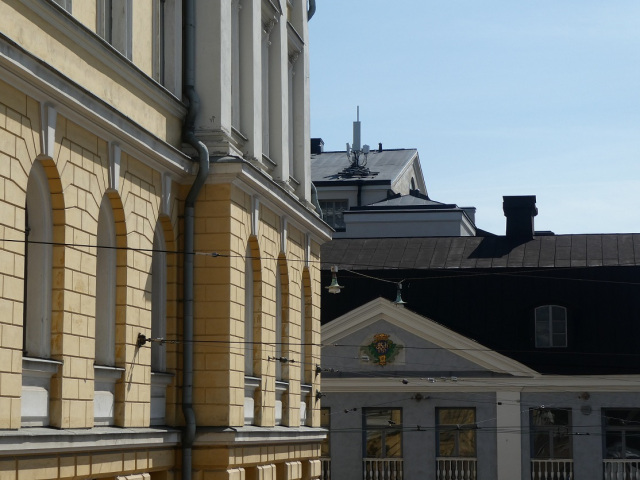
10. Government Castle
The base station radiation outside the Government Castle averages around 50,000 µW /m² and up to 105,000 µW /m². From the direction of the base station panel, it can be concluded that strong radiation is also directed towards the windows of the Government Castle and the interior of Aleksanterinkatu.
The previous government in Finland was infamous for decisions and laws that were hastily prepared. The question arises to what extent is this due to the presence of high levels of radio frequency radiation in the Government premises? After all, radio-frequency radiation has been shown to have deleterious neuropsychiatric effects ( Pall 2016 ).
Heavy base station radiation is due to competition between operators
Heavy base station radiation in Helsinki and elsewhere in Finland is due to competition between operators. They compete with each other for the speed of mobile data. With strong advertising, operators have convinced consumers that mobile data at the fastest possible cost, wherever it may be, is in their best interests, though of course not. It would be in the citizens’ best interest to prioritize their health.
Another reason for the strong base station radiation is due to the commercial calculations of the operators. By cranking up the power to the base stations, the operators are able to cover a larger area with a smaller number of base stations. Here, too, it is not about citizens’ health.
Finland uses scientifically outdated radiation limit values
The reader may wonder if there are no radiation limits in Finland. Yes, there are but the extremely high limits of radio frequency radiation do not protect the population. ICNIRP limits for radio frequency radiation are in use in Finland. It is an organization famous for its connections with the mobile industry ( Investigate Europe ).
Existing limits for radio frequency radiation only protect against thermal effects of 6-30 minutes. These do not protect against long-term biological effects of radio-frequency radiation, such as cancer.
It has been scientifically proven that radio frequency radiation has biological and health effects far below the outdated ICNIRP limits ( Belpomme 2018 ).
Scientists are calling for precautionary limits
The current limits for RF emissions protect only the interests of the technology industry, not the health of the population.
An international petition against 5G has been signed by 244 EMF scientists. These researchers have published a total of 2,000 peer-reviewed scientific articles, as explained by Dr. Joel Moskowitz, Department Director at the University of California, Berkeley ( Moskowitz 2019 ).
In the petition, the researchers are demanding, in addition to the suspension of 5G, radiation limit values based on biological effects and the precautionary principle.
The precautionary principle is a sound instrument for population risk management. The precautionary principle should be implemented where a significant proportion of the scientific community considers that an environmental exposure may cause harm to public health.
The precautionary principle is also recognized in the EU Charter. It states:
“Union policy on the environment shall aim at a high level of protection taking into account the diversity of situations in the various regions of the Union. It shall be based on the precautionary principle and on the principles that preventive action should be taken, that environmental damage should as a priority be rectified at source and that the polluter should pay.” ( EUR-Lex )
However, for some reason this paragraph does not apply at EU level when it comes to wireless technology radiation. The financial interests of the technology industry are paramount.
Limits based on the precautionary principle exist elsewhere:
Many countries and European cities adhere to the precautionary limits for radio-frequency radiation. They are many times stricter than the Finnish radiation limits.
For example, the limit values for radio frequency radiation in Vienna are 10,000 µW / m² and in Salzburg 1000 µW /m². In 2013, Liechtenstein set a target value of about 1,000 µW / m². Significantly lower radiation exposure limits based on the precautionary principle are also found in many other regions and many other cities.
A large BioInitiative 2007 report prepared by scientists recommended a ceiling of 1,000 µW /m² for outdoor use. In my opinion, this level would also be suitable for Finland. The level would still allow for voice calls and wireless internet use, but would significantly reduce the passive and unwanted exposure of the population to radiation.
If Finland were to be concerned about the health of its citizens, the precautionary limits for base station radiation would also be set here, and operators would be brought under control.
Link to the article in Finnish:
Rajua tukiasemasäteilyä Helsingin keskustassa

